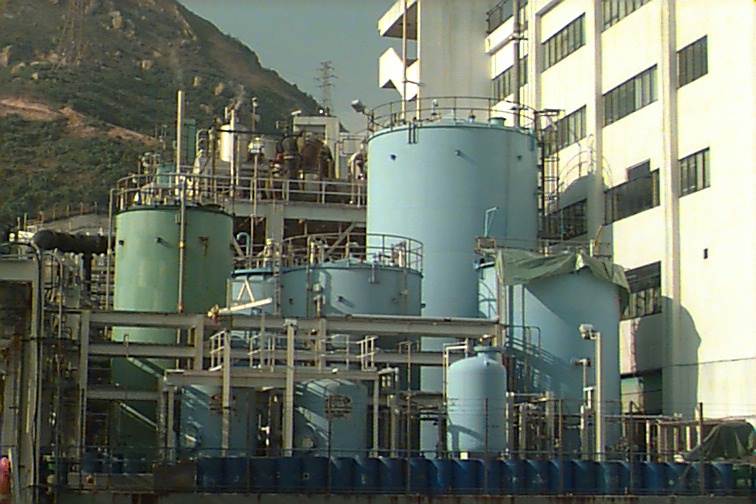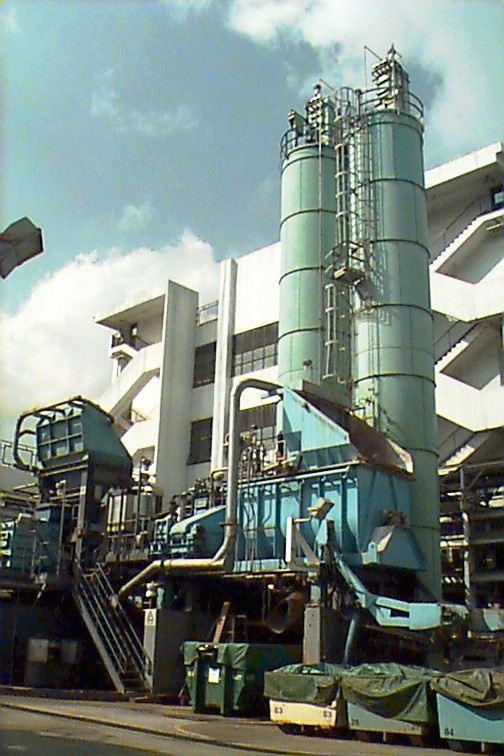Description of the CWTC
Physical/Chemical Treatment
Continuous Neutralisation
This serves two purposes: (1) to neutralise acid wastes (2) to serve as an alkaline precipitator for a number of metal containing waste streams. The feed streams to the neutralisation tanks are:
- Acid wastes from bulk storage
- Miscellaneous inorganics from bulk storage
- Non-chelated ferric chloride etchant from bulk storage
- Reduced chromium solution from the reduction reactor
All residues resulting from the neutralisation and precipitation processes are dewatered and further treated in the stabilisation unit. The treated water is sent onward for final polishing before discharge.

Effluent Tanks
Waste Etchant Treatment
Spent ammoniacal chloride etchants and cupric chloride etchants are treated with caustic soda to recover copper oxide.
Chromium Reduction
In the chromium reduction reactor hexavalent chromium is reduced to a non-toxic trivalent state. The reduced material is sent to the Continuous Neutralisation System for precipitation and dewatering.
Other Aqueous Treatment
Treatment processes for chelated zinc, copper and nickel waste solutions are essentially the same as those for chelated ferric chloride etchants. Due to the multiple waste streams involved and a multitude of chelated compounds in these streams, two parallel treatment trains are used. The treatment trains consist of multi-reagent tank, precipitators and the filtration systems. Filter cake produced by these systems is sent to the stabilisation unit and the filtrate is sent to the Continuous Neutralisation system.
Stabilisation
All solid residues, solid metal bearing chemical wastes and some liquid wastes, including slurries and brine are chemically stabilised in this system prior to disposal at landfill. The system utilises a batch mixer and specific reagents to achieve chemical fixation or stabilisation.

Waste Stabilisation System